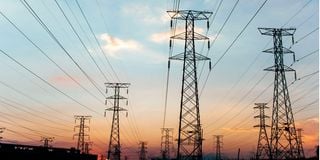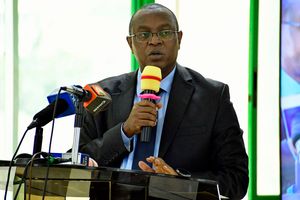
Kenya is under renewed pressure to boost power generation as reserves dwindle.
Kenya aims to add up to 250 megawatts (MW) of new renewable energy to its national grid by 2027, a top official has said, boosting the country's rapidly dwindling electricity reserves.
Energy Principal Secretary Alex Wachira said a pipeline of geothermal projects, including the 100MW Paka in Baringo County, would help the country meet its growing energy needs while boosting green energy production.
“Looking at the country’s spinning reserve and capacity, I am happy we have about 35KW coming in by 2025 from UK-based Globeleq, and for China’s Kaishan, after unlocking some challenges in the coming days, will give us some 70 MW by the same period or in the first quarter of 2026,” the official said on the sidelines of a geothermal development symposium in Nakuru on Wednesday.
“We also want to bring on board the first 80 MW from Olkaria 7 around the first quarter of 2027 and that should come on board when Paka will also be connected.”
Kenya is under renewed pressure to boost power generation as reserves dwindle. Energy Cabinet Secretary Opiyo Wandayi revealed last week that Kenya Power had resorted to load shedding in August due to dwindling reserves.
“During the last peak demand of 2239MW recorded on 21st August 2024, 6MW was load shed from the grid while the reserve margin was only 9MW against the system requirement of 310MW,” the CS said in a statement last Friday.
Load shedding is a way to distribute demand for electrical power across multiple power sources. Load shedding involves shutting down the supply to some users as a temporary measure to relieve stress on a primary energy source when the electricity demand is greater than the primary power source can supply.
Kenya has an installed power capacity of 3,199.9MW, according to the Energy and Petroleum Regulatory Authority. This includes 200MW imported from Ethiopia and 210.3MW of solar, which is produced locally but is unavailable at night. Further, it includes 425.5MW of wind, whose availability rarely exceeds 65 percent annually.
In the 1990s, power rationing was rampant in Kenya, forcing the government to open up the sector to private investment through independent power producers (IPPs).
Investment in new generation capacity by both state-owned KenGen and IPPs helped stabilise power supply and end rationing.
However, Kenya has been slow to add new generation capacity to meet growing demand in recent years. Moreover, the country's recent major capacity investments have been in renewable energy sources such as wind and solar, which are intermittent.









